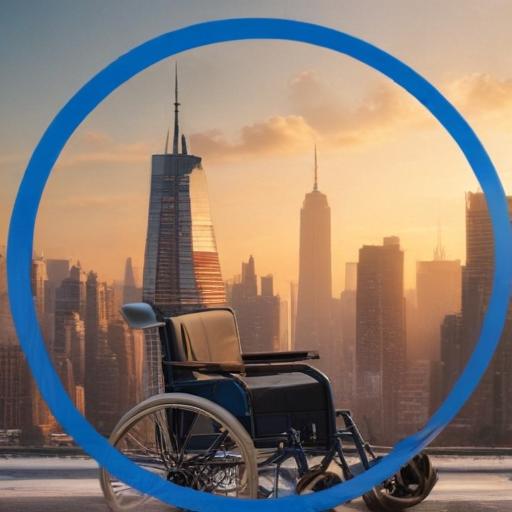New York City Looks Ahead to an Age-Inclusive Future as NYC Aging Publishes Service Needs Assessment
New York City’s Department for the Aging (NYC Aging) released the results of its latest Service Needs Assessment, laying out a bold blueprint for a city that supports an aging, increasingly diverse population. As the city’s senior population grows, officials say the moment is defining for aging services and for creating a city that works for people of all ages.
What the survey covers and who participated
– The assessment, produced in NYC Aging’s 50th anniversary year, emphasizes a vision of universal design, community-based care, and culturally tailored programs that uphold dignity and opportunity for every older New Yorker.
– The survey was developed with internal experts and external stakeholders and drew on data from secondary sources. It was offered in 11 languages and available both online and on paper, taking about 15–20 minutes to complete.
– A total of 8,600 people participated: 7,130 older adults and 4,799 caregivers, representing all five boroughs.
Key findings at a glance
– Social isolation: Many respondents reported loneliness, anxiety, or depression, and about one-third expressed interest in volunteering but had not yet engaged.
– Caregiving: Roughly half were caring for someone else, often while juggling work or family responsibilities. Many do not see themselves as “caregivers,” yet they form what officials call an “invisible workforce” with an estimated economic value of about $1.7 billion annually.
– Financial stability: About four in ten older adults struggle to pay at least one bill, with most living on fixed incomes—challenging the stereotype of a uniformly affluent or impoverished older population.
– Housing: One in four lack stable housing. Accessibility, safety, and a housing vacancy rate under 1% complicate the landscape. Programs like SCRIE (Senior Citizen Rent Increase Exemption) are highlighted as critical relief.
– Health and safety: 15% reported being victims of abuse or crime, and only 40% of such incidents are reported, often because the abuser is someone the victim knows.
A shift toward community-based care
Officials highlighted the economic and quality-of-life benefits of keeping services in the community. They point to a cost comparison showing community-based care at about $58,000 per person per year versus roughly $185,000 for institutional placement—an argument for expanding home- and community-based services as a smarter, more humane approach.
Language and culture as a centerpiece
With a large portion of New Yorkers of color and many residents speaking languages other than English, NYC Aging underscored its commitment to language access. The department enforces a rule that when 20% of a community speaks a given language, senior centers must provide services in that language.
Recent initiatives to advance an age-inclusive city
– Cabinet for Older New Yorkers: A cross-agency effort with 27 city agencies to weave aging perspectives into all city services.
– Senior Liaisons in Every Precinct: NYPD officers trained to assist older adults.
– Aging Curriculum in Schools: Programs in middle and high schools to combat ageism.
– Hospital Partnerships: Training for hospital staff to connect patients with community resources upon discharge.
Looking ahead and how communities can participate
NYC Aging plans targeted briefs in the coming months to spotlight the needs of specific populations and service areas. Officials are also fostering collaboration with mainstream and ethnic media to ensure information reaches every community. For residents seeking services or information, the department’s website offers service locators, program guides, and a podcast.
Why this matters for New Yorkers
– The survey paints a comprehensive picture of the hurdles many older adults face—from isolation and caregiving responsibilities to financial insecurity and housing instability.
– By centering community-based care and language-inclusive services, NYC Aging is prioritizing equitable access and practical support that can improve quality of life and reduce reliance on expensive institutional care.
– The 50th-anniversary moment is framed as a turning point to build an age-inclusive city where planning, resources, and design choices reflect the realities of longer, more diverse lifespans.
Additional comments and value for readers
– Readers can expect more targeted briefs in the coming months that could inform neighborhood-level programs and funding decisions. Expect deeper dives into the needs of seniors with specific cultural or language backgrounds.
– Community members can engage by exploring the service locators on the NYC Aging site, volunteering, or leveraging the information provided through hospital partnerships and school-based initiatives.
– The emphasis on an “invisible workforce” of caregivers signals potential future policy discussions around support, training, and recognition for informal caregivers.
Summary
NYC Aging’s Service Needs Assessment confirms that New York City is navigating a rapidly changing aging landscape. The city is committing to an age-inclusive approach that blends community-based care, language access, and cross-agency collaboration, supported by data-driven planning. With a focus on reducing isolation, supporting caregivers, stabilizing housing, and preventing abuse, the plan aims to improve lives now while building a more resilient future for all New Yorkers. A hopeful, positive spin rests on translating survey insights into practical programs that ensure dignity, opportunity, and inclusion for every older adult in the city.
